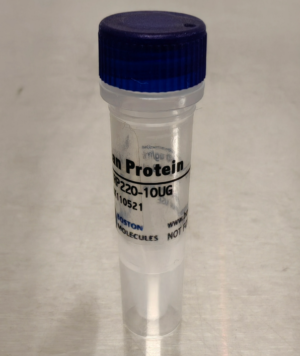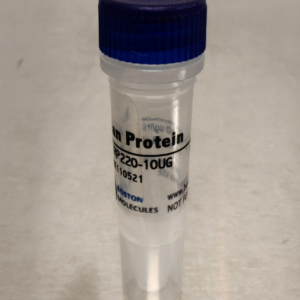Human TGFb1, 1 mg
Human TGFb1, 1 mg
Human CED Protein, Human DPD1 Protein, Human LAP Protein, Human TGF-beta 1 Protein, Human TGFB Protein, Human TGFbeta Protein
$5,600.00
TGF-beta 1 (transforming growth factor beta 1) share a characteristic cystine knot structure with TGF-beta -2 and -3 that are proposed to act as cellular switches that regulate processes such as immune function, proliferation and epithelial-mesenchymal transition. Human TGF beta 1 cDNA encodes a 390 amino acid (aa) precursor that is processed by a furin like convertase to generate an N terminal 249 aa latency associated peptide (LAP) and a C terminal 112 aa mature TGF beta 1. TGF beta is activated from latency by pathways that include actions of the protease plasmin, matrix metalloproteases, thrombospondin 1 and a subset of integrins. TGF beta 1 signaling begins with high affinity binding to a type II ser/thr kinase receptor termed TGF beta RII. This complex phosphorylates and activates Smad proteins that regulate transcription (1-5)



Reviews
There are no reviews yet.